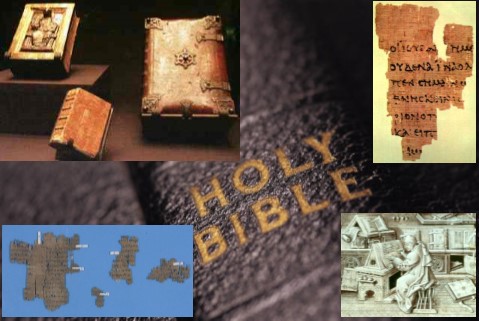Which Greek New Testament is God’s Word?
Generally speaking, three Greek New Testaments have been used by scholars as the basis of recent English translations: the Textus Receptus (initially published in 1516 and refined during the 1500’s), the Byzantine Text (published in 1982 as the Hodges-Farstad Majority Text, and in 2005 as the slightly different Robinson-Pierpont Byzantine Textform), and the United Bible Societies’ Greek New Testament, which has the same text as the Nestle-Aland compilation known as Novum Testamentum Graece. The UBS/Nestle-Aland compilation is based primarily on the Alexandrian Text.
Which one is God’s Word? Are all three equally Scripture? Let’s take a closer look to see what sets each one apart from the other two.

The United Bible Societies’ compilation, now in its fifth edition, is the base-text of several modern translations, such as the New International Version, the New Revised Standard Version, and the English Standard Version. Occasionally the translators deviated from this base-text, but such instances are exceptions.
It has been said that the Byzantine Text is a more accurate version of the Textus Receptus. Though this statement is imprecise, it may help the average person get some idea of the similarities between the two. After the Textus Receptus was compiled in the 1500’s, many more manuscripts became available. In 1982, when Hodges and Farstad published the Majority Text, their compilation provided the text represented by the consensus of known Greek manuscripts, thus setting aside minority-readings contained in the Textus Receptus.
Why are there two editions of the Byzantine Text, with differences between them? In Matthew through Jude, there are some textual differences where the evidence is closely divided, and occasionally (especially in John 7:53-8:11) textual differences involve more than two alternative readings; in some cases, no single reading can claim support from a majority of the manuscripts. In the book of Revelation, the number of differences between the Hodges-Farstad Majority Text and the Robinson-Pierpont Byzantine Textform is especially high, mainly because Robinson and Pierpont took identifiable manuscript-families into consideration, rather than simply printing whatever reading had more manuscripts in its favor.
About 1,500 minor differences occur between any edition of the Textus Receptus and either edition of the Byzantine Text. All three major compilations – the Textus Receptus, the Byzantine text (whether represented by the Hodges-Farstad Majority Text, or by the Robinson-Pierpont Byzantine Textform), and the UBS/Nestle-Aland text – agree over 95% of the time. Many readings within the remaining 5% have no discernible impact on translation.
However, some disagreements strongly impact translation – including readings in the Alexandrian tradition which appear to express errors, or which diverge from very early patristic testimony, or which do not support the deity of Christ to the same extent as the Byzantine alternative. Where such readings occur – such as in Matthew 27:49, Mark 6:22, Mark 10:24, Mark 16:9-20, Luke 22:43-44, Luke 23:34, John 7:8, John 7:53-8:11, First Timothy 3:16, and First John 4:3 – even some of the English translations that are mainly based on the UBS/Nestle-Aland text adopt the Byzantine reading, or mention it in a footnote, to compensate for the Alexandrian manuscripts’ shortcomings.
Some of the deeper issues at stake involve the question of the origin of the Byzantine Text. The manuscript-evidence for the Alexandrian Text is older, but that may be merely an effect of the low-humidity climate of Egypt, which allowed manuscripts made of papyrus to survive longer there than in other areas. Patristic and versional evidence demonstrates the use of an essentially Byzantine form of the text of the Gospels in the 300’s – the same century in which the two most important Alexandrian manuscripts, Vaticanus and Sinaiticus, were made. Were those patristic writers and early translators using a novel form of the text, or a form that had been handed down to them from yet more ancient times? In addition, because most Greek manuscripts (over 80%) tend to agree at any given point, some might say that this shows that if any text has a special claim to have been providentially preserved for the church, it is the Byzantine Text.
With this brief introduction to the issue at hand, we encourage students of God’s Word to weigh the evidence as they build, or test, their convictions on this subject.
The mother and son team of Verna and James Linzey wrote this article together.
Category: Biblical Studies, Fall 2017


